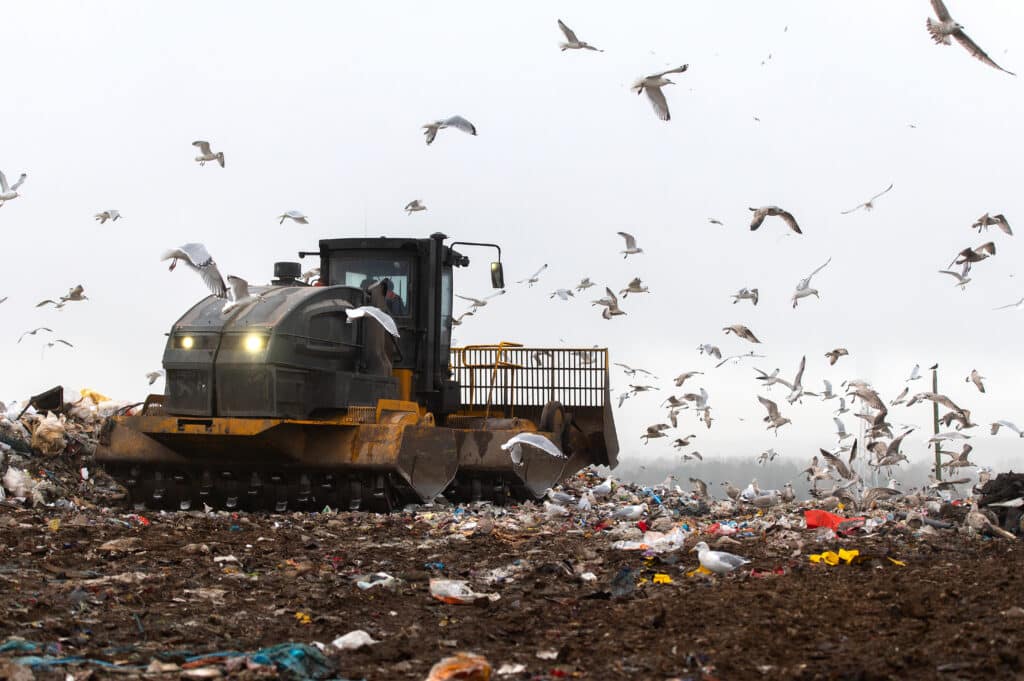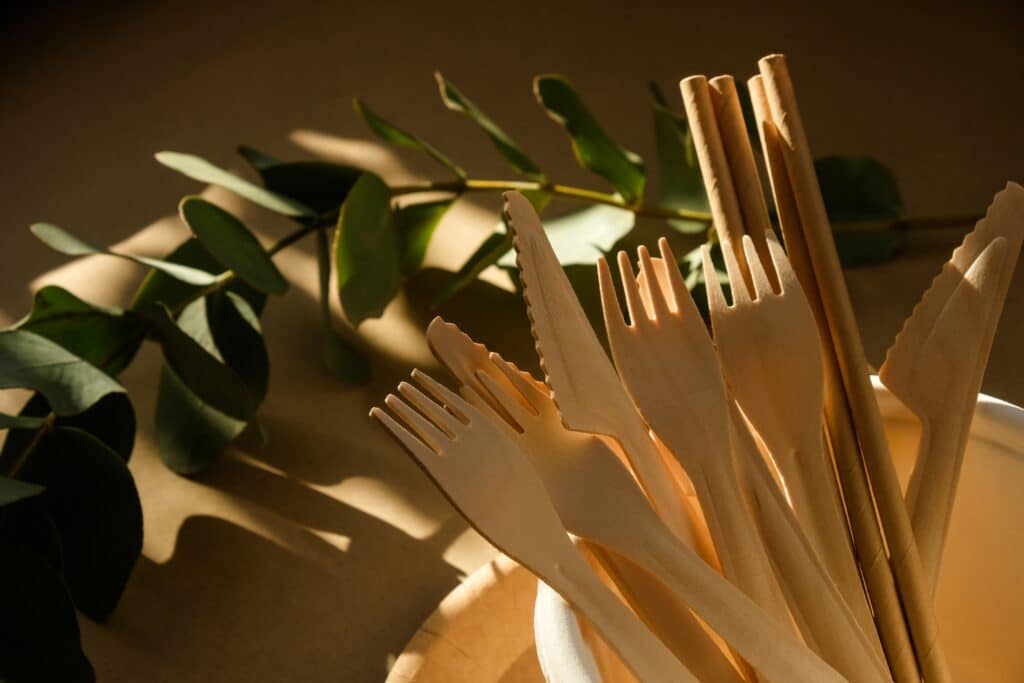The decisions we make in our daily lives translate into environmental impacts. One seemingly small decision – such as the type of cutlery we use – can have significant consequences. Learn why plastic cutlery is a major contributor to pollution & its lasting effects on our world.
Plastic cutlery: What Are the Challenges?
Plastic cutlery is made predominantly from non-renewable fossil fuels, mainly crude oil. The extraction of these resources contributes to environmental degradation and resource scarcity. Once discarded, unrecycled plastic cutlery remains in the environment for centuries. Billions of forks, knives, and spoons are thrown away each year. They accumulate in landfills, silt up waterways, and damage marine ecosystems. As they decompose, they release microplastics that enter our environment, the food chain, and, as we now know, also our bodies. Plastic cutlery and straws often present major complications in recycling facilities because of their small size. These small items often fall through the machines in recycling facilities and cannot be recycled like larger plastics. In addition, plastic releases toxic chemicals when heated, further complicating the recycling process. Plastics also often contain harmful additives such as phthalates or bisphenol-A (BPA). These chemicals can pass through cutlery into our food, potentially affecting human health.

Biodegradable Alternatives: Why Incorporate Them into our Lives?
There are many alternatives to plastic products today, but not all are as perfect as they seem. While including these alternatives in our daily lives is essential, we must also continually educate ourselves about their potential adverse effects on our environment and health. Here is a list of the most commonly used alternatives, how they can be better than plastic, but how they can also harm us.
Wooden cutlery
Made from sustainably sourced wood, wooden cutlery is biodegradable and lightweight. However, only a small part of the tree can be used in the production of wooden cutlery, leading to a large amount of unnecessary waste. Toxic residues from soil or pesticides can remain in the cutlery itself. If disposable wooden cutlery gets into water, for example, the resins they contain can be toxic to some aquatic organisms. In addition, their use is quite discomforting as they leave an odour and taste trace in our food.
Bamboo cutlery
Thanks to its ecological properties, bamboo cutlery is a sustainable alternative to plastic cutlery. It is lightweight, durable, and versatile for different types of food. However, manufacturing processes often use potentially harmful chemicals and possible allergens.
Cornstarch cutlery
If you’ve come across the term cornstarch cutlery anywhere, you’ve probably thought it sounds like a great option. However, the truth is that you can’t make cutlery out of starch itself, as this material would gel and swell in a water-based environment, so it would have to be chemically treated, which would only negatively affect its biodegradability. So only PLA, a type of bioplastic, is made from starch, but there are also many complications associated with it. So it’s just marketing ploys that make cornstarch cutlery sound like a great alternative.
Sugar cane cutlery
This alternative is similar to cornstarch cutlery. Various polymer blends are made from sugar cane, for example PLA+PBS or PLA alone. Most bioplastics and plant-based materials contain toxic chemicals, may compete with food crops for soil and water or may not degrade properly in the natural environment, leading to litter and pollution. So these are again just marketing techniques of the manufacturers. Unfortunately, you won’t find cutlery made of sugar cane as such yet either.

But is There a Truly Perfect Option?
At Refork, a pioneer in reducing dependence on plastics, we have found the solution. Our cutlery is made from a mixture of cellulose and a compostable biopolymer.
This innovative material ensures that Refork cutlery is both functional and environmentally friendly. Not only is our production highly sustainable, but Refork cutlery is also designed to decompose in nature. When disposed of, it breaks down into harmless components, leaving no lasting microplastics or toxic substances in the environment. Unlike conventional plastics, they do not remain in the environment for centuries. The use of celullose not only reduces plastic waste but also promotes sustainable forest management. Cellulose is abundant, renewable, and minimizes the need for primary plastics. The biopolymer in our products is created using naturally occurring microorganisms. When our cutlery decomposes, it not only leaves no harmful traces in the nature but also restores the natural components that positively affect it.
Conclusion
As you have learned in this article, not all gold is glitter. It is undoubtedly crucial to reduce the production of virgin plastics and to seek and create innovative alternatives. Still, it is also essential to stay vigilant and educate ourselves about the real impact of these options. If we make the right choices, we are actively participating in closing the plastic loop. Our discarded utensils return to nature and enrich the soil instead of polluting it.
Well-chosen alternatives will not compromise our health or contaminate our food. Last but not least, Biodegradable cutlery can be stylish and functional. Although alternatives remain relatively expensive for the time being, it is important to remember that it is their frequent use that will make them more affordable in the future. So let’s make the environmentally conscious choice. Every biodegradable fork or spoon contributes to a cleaner world. It may seem like a small step, but it’s a big step for our planet.